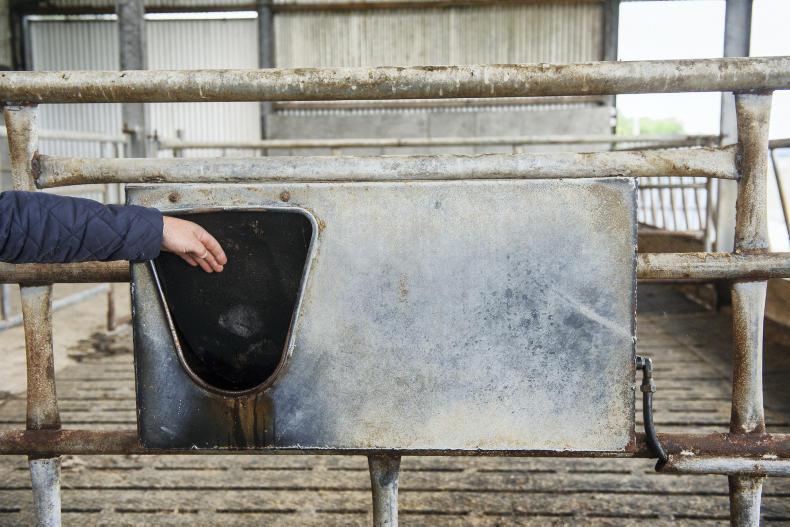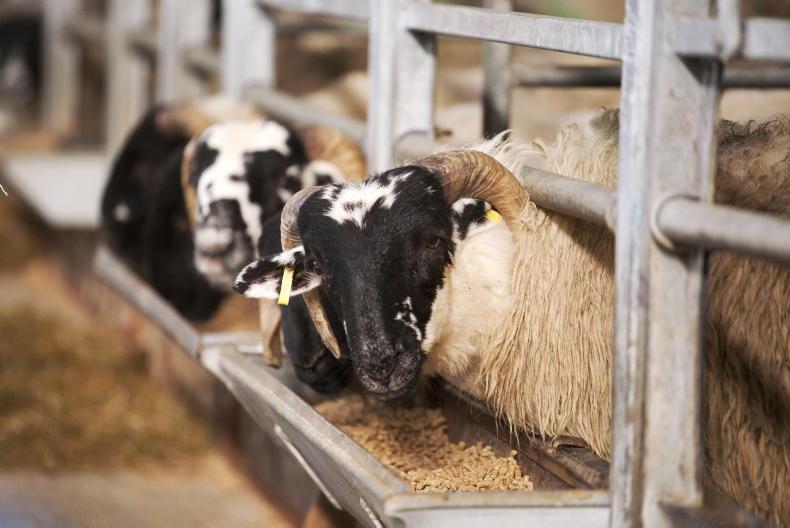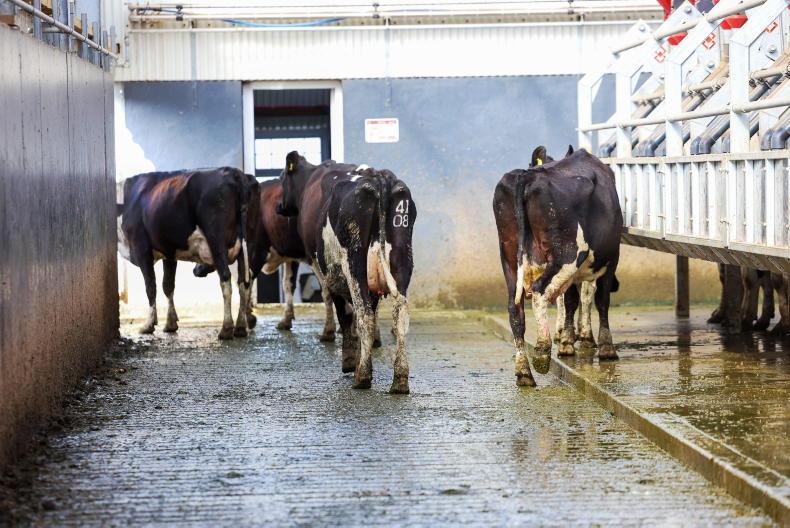They might roar and make noise but livestock will survive for a period of time without food. However, they will not survive without water. Animals will suffer from dehydration if left longer than 18-24 hours without water.
Most vulnerable
The most vulnerable groups of animals are milking cows, animals on high-concentrate diets and animals fed hay and straw.
Milking cows must have access to drinking water at all times. While the majority of southern cows are in late lactation, they are still milking 10-15l per day and some are on very dry, high-quality silages with meal. They need water.
In Greenfield, cows are still consuming 50-plus litres of water per day. Early lactation cows will consume 2.5-3.0l water per litre of milk produced. Therefore, an animal producing 30l of milk will require 75-90l of water.
Finishing animals
Finishing animals on high levels of dry feed, ie high-concentrate diets, will have a big demand for water. These animals should always have free access to water. Some studies show research up to 6l water/1kg DM. Therefore, an animal consuming 10kg DM of dry feed will need 60l of water daily.
If stock can’t have water, you are better to reduce meal feeding levels. These animals need to be introduced to meals gradually, again, once water supply is restored. Again if water is removed for a long period let them back into water slowly also.
Reducing the meal and increasing wet forage intake will reduce the demand for water.
Diets high in salt, sodium bicarbonate and protein appear to stimulate water intake. Reducing mineral intake may reduce the demand for water, particularly in sheep. A lot of minerals contain salt or sodium derivatives.
Outside crops
Brassica crops such as rape, kale and fodder beet should not be grazed when frozen.
On days like today where the sun shines in a clear sky it might be expected that the crop will thaw by mid-day and the strip wire can then be moved and animals fed.
Where the crop does not thaw, you will have to look at alternatives – more silage.
Read more
Weekend weather: snow and icy weather to remain for coming days
Dairy management: know your forage quality
Beef management: fat scores for finishing cattle
They might roar and make noise but livestock will survive for a period of time without food. However, they will not survive without water. Animals will suffer from dehydration if left longer than 18-24 hours without water.
Most vulnerable
The most vulnerable groups of animals are milking cows, animals on high-concentrate diets and animals fed hay and straw.
Milking cows must have access to drinking water at all times. While the majority of southern cows are in late lactation, they are still milking 10-15l per day and some are on very dry, high-quality silages with meal. They need water.
In Greenfield, cows are still consuming 50-plus litres of water per day. Early lactation cows will consume 2.5-3.0l water per litre of milk produced. Therefore, an animal producing 30l of milk will require 75-90l of water.
Finishing animals
Finishing animals on high levels of dry feed, ie high-concentrate diets, will have a big demand for water. These animals should always have free access to water. Some studies show research up to 6l water/1kg DM. Therefore, an animal consuming 10kg DM of dry feed will need 60l of water daily.
If stock can’t have water, you are better to reduce meal feeding levels. These animals need to be introduced to meals gradually, again, once water supply is restored. Again if water is removed for a long period let them back into water slowly also.
Reducing the meal and increasing wet forage intake will reduce the demand for water.
Diets high in salt, sodium bicarbonate and protein appear to stimulate water intake. Reducing mineral intake may reduce the demand for water, particularly in sheep. A lot of minerals contain salt or sodium derivatives.
Outside crops
Brassica crops such as rape, kale and fodder beet should not be grazed when frozen.
On days like today where the sun shines in a clear sky it might be expected that the crop will thaw by mid-day and the strip wire can then be moved and animals fed.
Where the crop does not thaw, you will have to look at alternatives – more silage.
Read more
Weekend weather: snow and icy weather to remain for coming days
Dairy management: know your forage quality
Beef management: fat scores for finishing cattle











SHARING OPTIONS